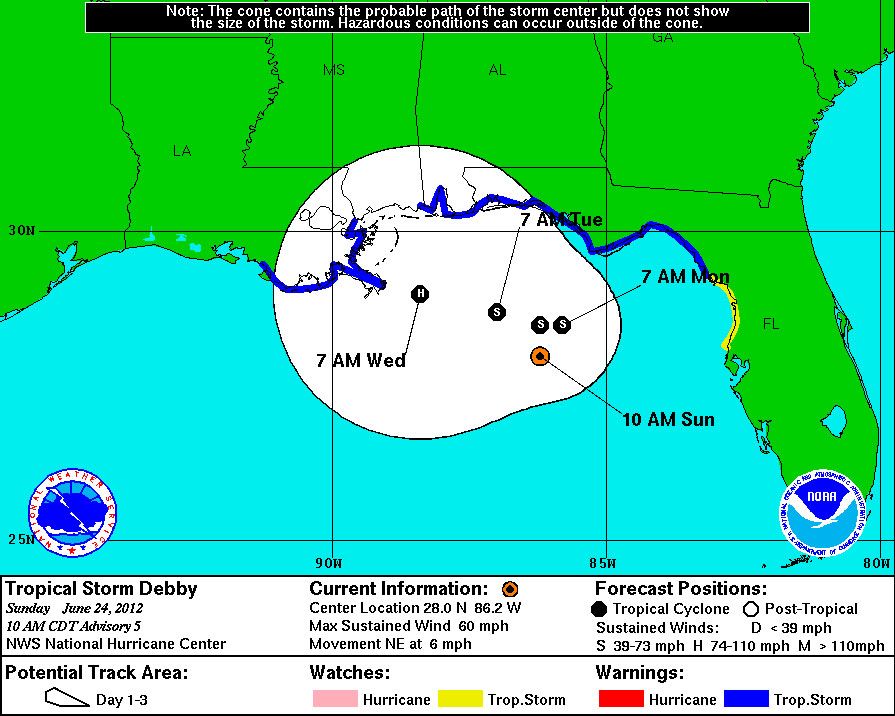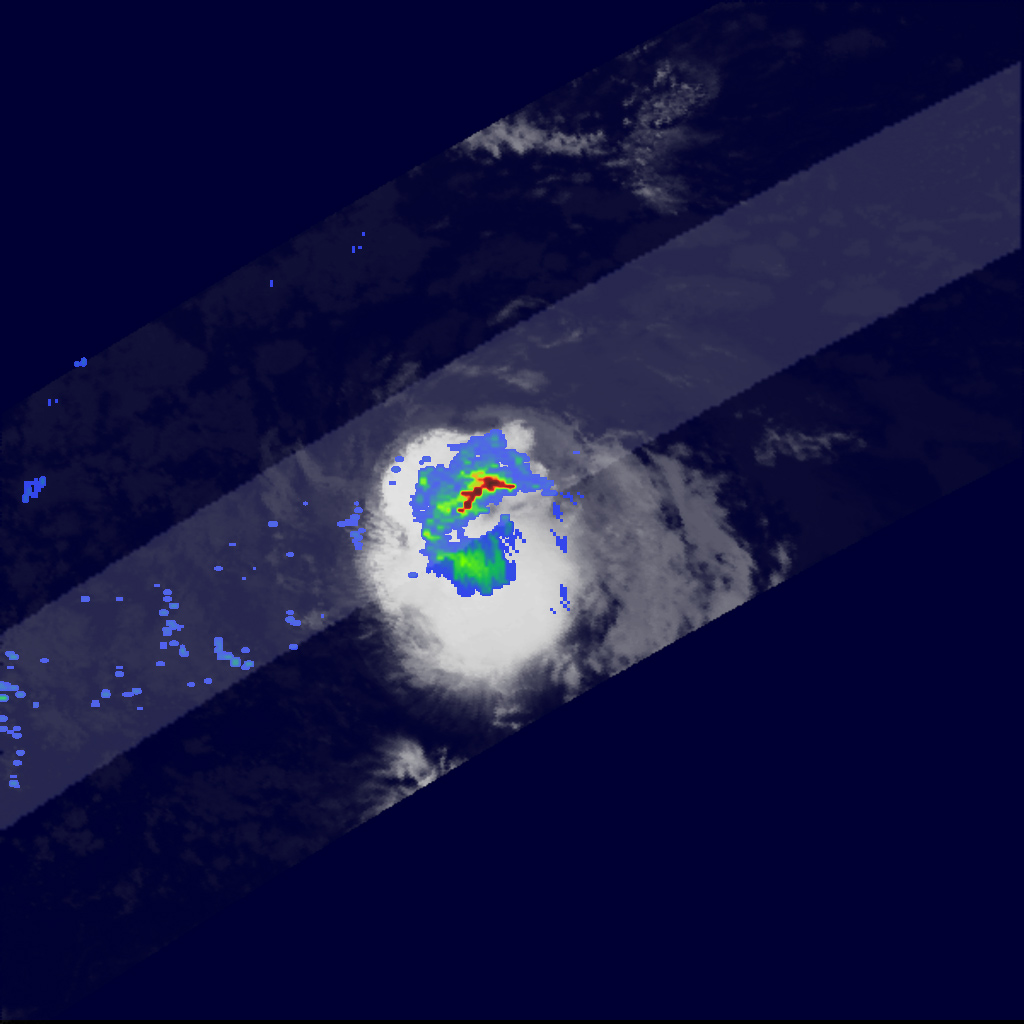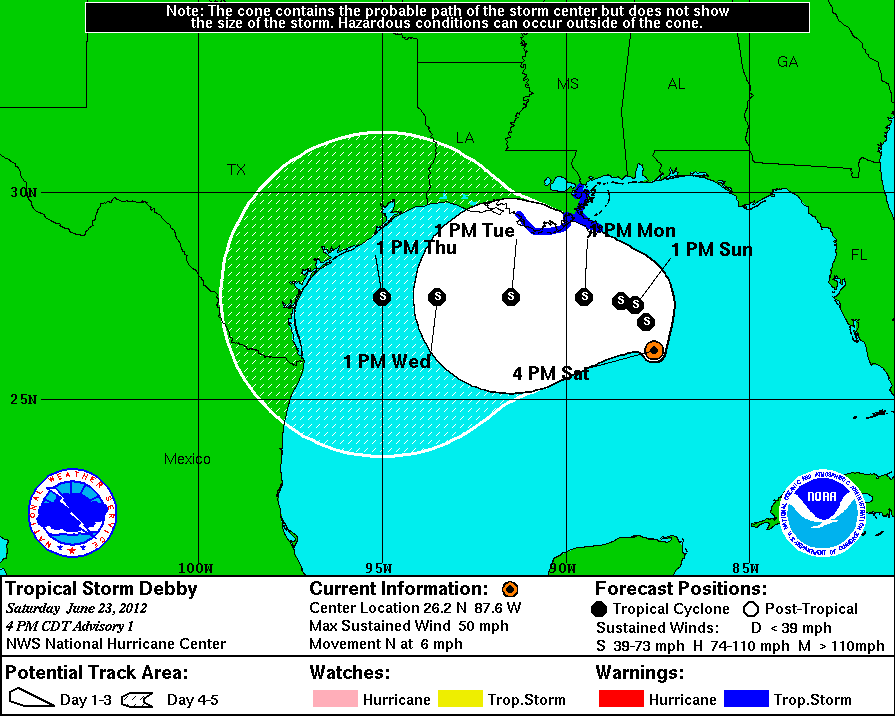Tropical Storm Debby’s Formation and Development

Tropical Storm Debby, a relatively weak but impactful storm, formed in the Atlantic Ocean during the 2012 hurricane season. Its development was influenced by a combination of atmospheric and oceanic conditions.
Formation and Initial Development
Tropical Storm Debby originated from a tropical wave that moved off the coast of Africa on June 18, 2012. This wave, characterized by a trough of low pressure, interacted with favorable atmospheric conditions, including warm sea surface temperatures and low vertical wind shear. These conditions provided the necessary energy and instability for the wave to develop into a tropical depression on June 21st. The depression, located several hundred miles east of the Lesser Antilles, gradually strengthened and was upgraded to Tropical Storm Debby on June 22nd.
Path and Intensity Changes
Tropical Storm Debby moved westward across the Atlantic, intensifying as it interacted with warm waters and favorable atmospheric conditions. It reached its peak intensity on June 23rd, with maximum sustained winds of 65 mph (100 km/h). After reaching its peak, the storm began to weaken as it encountered cooler waters and increased wind shear. Debby continued to move westward, making landfall on the Florida Panhandle on June 25th. It then weakened further, transitioning into a tropical depression and eventually dissipating over land on June 27th.
Factors Contributing to Intensity Changes
The intensity of Tropical Storm Debby was influenced by several factors:
- Sea Surface Temperatures: Warm ocean waters provide the heat and moisture necessary for tropical cyclones to develop and intensify. Debby’s initial strengthening was aided by the presence of warm sea surface temperatures in the Atlantic. As the storm moved over cooler waters, it weakened.
- Vertical Wind Shear: Wind shear, the change in wind speed and direction with height, can inhibit the development of tropical cyclones. High wind shear can disrupt the storm’s internal circulation, leading to weakening. Debby encountered increasing wind shear as it moved westward, contributing to its weakening.
- Land Interaction: When a tropical cyclone makes landfall, it loses its primary source of energy – warm ocean waters. Land interaction also leads to increased friction, further weakening the storm. Debby’s weakening after making landfall in Florida was primarily due to land interaction.
Impact of Tropical Storm Debby

Tropical Storm Debby, while classified as a relatively weak storm, brought significant impacts to several regions, primarily due to its slow movement and prolonged rainfall. The storm’s effects were felt across various aspects of life, from property damage and infrastructure disruptions to agricultural losses and human displacement.
Property Damage and Flooding
The prolonged rainfall associated with Tropical Storm Debby resulted in widespread flooding across numerous areas. Rivers and streams overflowed their banks, inundating homes, businesses, and infrastructure. Property damage was extensive, with homes and businesses suffering significant damage due to water intrusion and structural instability.
Infrastructure Disruptions and Transportation
Tropical Storm Debby caused significant disruptions to transportation networks. Roads and highways were closed due to flooding, landslides, and debris. Bridges were damaged or collapsed, further hindering transportation. Power outages were widespread, affecting homes, businesses, and critical infrastructure.
Agricultural Impacts
The heavy rainfall and flooding caused significant damage to agricultural crops and livestock. Fields were inundated, leading to crop losses and livestock displacement. The storm also impacted irrigation systems and farm infrastructure, further disrupting agricultural activities.
Human Impact
Tropical Storm Debby resulted in several casualties, injuries, and evacuations. The storm’s heavy rainfall and flooding led to drownings and other storm-related injuries. Evacuations were necessary in numerous areas due to flooding and structural damage, resulting in temporary displacement of residents.
Response to Tropical Storm Debby: Tropical Storm Debby Hurricane

Tropical Storm Debby’s impact prompted a comprehensive response effort, involving preparedness measures before the storm’s arrival, emergency response during the storm, and a meticulous recovery process following its passage.
Preparations for Tropical Storm Debby
Before the storm’s arrival, authorities and residents alike engaged in a series of proactive measures to mitigate potential damage and ensure the safety of communities.
- Issuance of Warnings and Advisories: The National Hurricane Center issued tropical storm warnings and advisories, alerting residents to the impending threat and providing guidance on necessary precautions.
- Evacuation Orders: In areas predicted to experience significant flooding or high winds, evacuation orders were issued to ensure the safety of residents. Local authorities worked tirelessly to ensure timely and efficient evacuations.
- Stockpiling of Supplies: Residents were advised to stock up on essential supplies such as food, water, batteries, first-aid kits, and fuel. These preparations proved crucial for weathering the storm’s impact and ensuring self-sufficiency in the aftermath.
- Securing Property: Homeowners and businesses took steps to secure their properties, including boarding up windows, securing loose objects, and moving valuables to higher ground. These measures minimized potential damage from high winds and flooding.
Emergency Response During Tropical Storm Debby
As Tropical Storm Debby made landfall, emergency response teams were activated to address the immediate needs of affected communities.
- Search and Rescue Operations: Rescue crews, equipped with boats and helicopters, conducted search and rescue operations in flooded areas, ensuring the safety of stranded individuals and assisting those in need of immediate medical attention.
- Disaster Relief Efforts: Local, state, and federal agencies collaborated to provide immediate disaster relief, including food, water, shelter, and medical assistance to affected communities. These efforts were crucial in meeting the basic needs of displaced residents.
- Power Restoration: Utility crews worked tirelessly to restore power to affected areas, prioritizing critical infrastructure such as hospitals and emergency services. Restoring power was essential for resuming essential services and facilitating the recovery process.
- Road and Infrastructure Repair: Road crews cleared debris and repaired damaged roads and bridges, enabling access to affected areas and facilitating the transportation of supplies and emergency personnel.
Recovery Process Following Tropical Storm Debby, Tropical storm debby hurricane
Following the storm’s passage, communities embarked on a long and arduous recovery process, focusing on rebuilding damaged infrastructure and restoring normalcy to their lives.
- Debris Removal: Crews worked tirelessly to remove debris from roads, homes, and businesses, clearing the way for reconstruction and restoring accessibility to affected areas.
- Home and Business Reconstruction: Residents and businesses began the challenging task of rebuilding their homes and businesses, facing significant financial burdens and emotional distress. Insurance claims, government assistance, and community support played crucial roles in the recovery process.
- Infrastructure Repairs: Government agencies and utility companies invested heavily in repairing damaged infrastructure, including roads, bridges, power lines, and water systems. These efforts were essential for restoring essential services and ensuring long-term resilience.
- Psychological Support: Mental health professionals provided support to individuals and families coping with the trauma and stress of the storm’s impact. Addressing the psychological well-being of affected communities was crucial for their overall recovery and resilience.
Tropical storm debby hurricane – Tropical Storm Debby brought a deluge of rain, leaving many feeling like they were weathering a hurricane. But even amidst the chaos, there’s a silver lining: the opportunity to create a sanctuary within your home. A cozy dressing area can be a welcome escape, and the right dressing table chair stool can add a touch of elegance and comfort.
Just like Debby’s unpredictable weather, choosing the perfect stool for your dressing table is a matter of finding the right balance between style and functionality.
Tropical Storm Debby, with its heavy rainfall and powerful winds, served as a stark reminder of the unpredictable nature of weather. While the storm’s impact was felt across the region, the resilience of communities shone through, just as the potential of ripple xrp shines in the financial landscape.
Like the storm, the future of this digital currency remains uncertain, but its potential to revolutionize transactions and financial inclusion is undeniable. As we navigate the complexities of both weather patterns and technological advancements, one thing remains constant: the power of adaptation and innovation to shape a brighter future.
